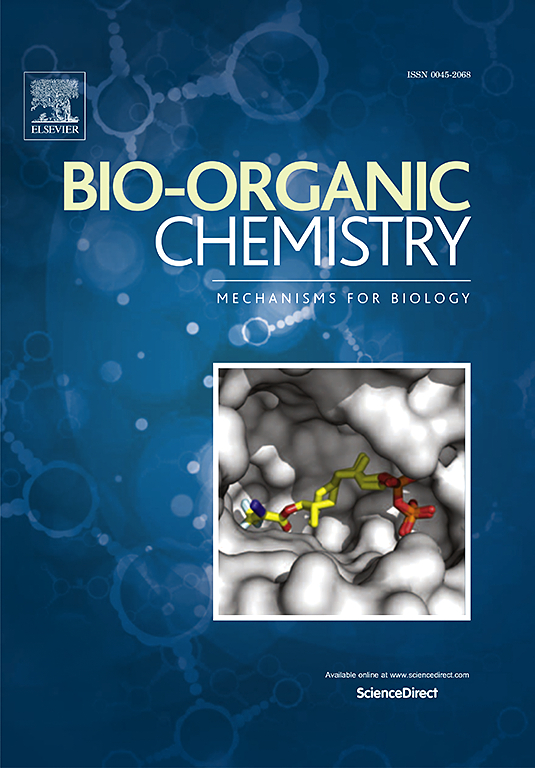Calliloboapins A-L, diterpenoids from the branches and leaves of Callicarpa loboapiculata and their biological activities
IF 4.5
2区 医学
Q1 BIOCHEMISTRY & MOLECULAR BIOLOGY
引用次数: 0
Abstract
Eleven new isopimarane diterpenoids and one new ent-pimarane diterpenoid, named calliloboapins A-L (1–12), were isolated from the branches and leaves of Callicarpa loboapiculata F. P. Metcalf. Their structures and absolute configurations were established by HRESIMS, UV, IR, 1D and 2D NMR spectroscopic analyses, single crystals X-ray diffraction and ECD calculations. Structurally, compound 1 possesses an unusual tricyclo [2.2.2.0] octane structure, and compound 2 is characterized by a cyclopentane ring B. Compound 3 contains an unprecedented ten-membered ring with an oxygen bridge connecting C-8 and C-9. The anti-inflammatory activities of all isolated compounds were evaluated by LPS-induced RAW264.7 cells. Compounds 1–12 inhibited the release of NO to varying degrees, and 3, 4, 8, 11 and 12 significantly suppressed the overexpression of inducible NO synthase. Moreover, liver X receptor alpha (LXRα) was predicted to be the probable target of isolates by Swiss Target Prediction tool, and compounds 2–4, 11 and 12 increased the protein expression of ATP-binding cassette transporter (ABCA1), showing potential antiatherogenic properties.

求助全文
约1分钟内获得全文
求助全文
来源期刊

Bioorganic Chemistry
生物-生化与分子生物学
CiteScore
9.70
自引率
3.90%
发文量
679
审稿时长
31 days
期刊介绍:
Bioorganic Chemistry publishes research that addresses biological questions at the molecular level, using organic chemistry and principles of physical organic chemistry. The scope of the journal covers a range of topics at the organic chemistry-biology interface, including: enzyme catalysis, biotransformation and enzyme inhibition; nucleic acids chemistry; medicinal chemistry; natural product chemistry, natural product synthesis and natural product biosynthesis; antimicrobial agents; lipid and peptide chemistry; biophysical chemistry; biological probes; bio-orthogonal chemistry and biomimetic chemistry.
For manuscripts dealing with synthetic bioactive compounds, the Journal requires that the molecular target of the compounds described must be known, and must be demonstrated experimentally in the manuscript. For studies involving natural products, if the molecular target is unknown, some data beyond simple cell-based toxicity studies to provide insight into the mechanism of action is required. Studies supported by molecular docking are welcome, but must be supported by experimental data. The Journal does not consider manuscripts that are purely theoretical or computational in nature.
The Journal publishes regular articles, short communications and reviews. Reviews are normally invited by Editors or Editorial Board members. Authors of unsolicited reviews should first contact an Editor or Editorial Board member to determine whether the proposed article is within the scope of the Journal.
 求助内容:
求助内容: 应助结果提醒方式:
应助结果提醒方式:


